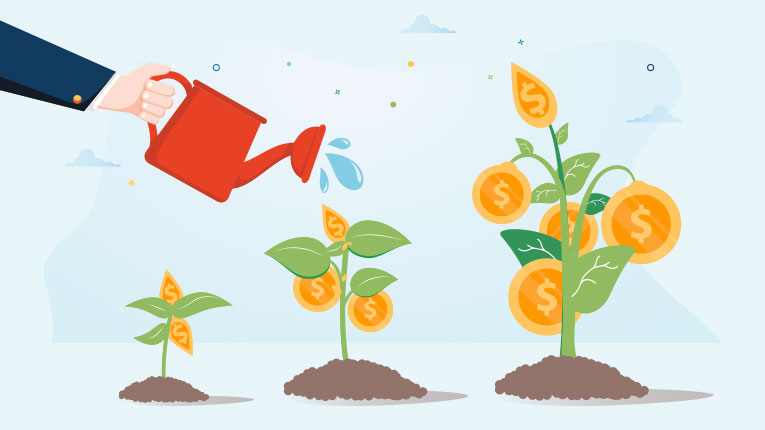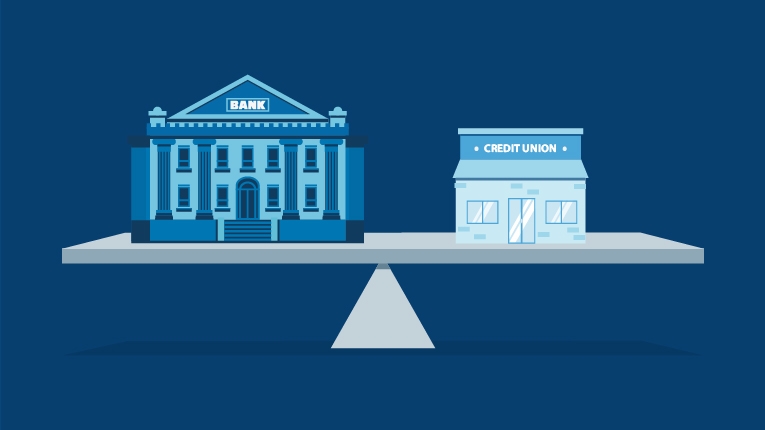5 Reasons a High-Yield Savings Account Is Worth It

It might seem like all savings accounts are the same, but a closer look reveals otherwise. Different accounts come with different rates, features, and requirements, and comparing options is essential for finding the best place to stash your cash. One type of account worth considering is a high-yield savings account—a deposit account that offers a higher-than-average annual percentage yield (APY).
Benefits of a High-Yield Savings Account
High-yield savings accounts offer valuable features and earn higher interest than regular savings accounts. Here’s what to know about the benefits of high-yield savings accounts, and a few of the minor drawbacks.
1. Higher APY
High-yield savings accounts are generally known to have a significantly higher APY than regular savings accounts. For instance, you might see a standard savings account with 0.30% APY and a high-yield savings account with an APY over 4.00%.
While rates vary and can change over time, online banks with few overhead costs tend to offer the highest APYs, and the interest earnings can add up. For example, assuming interest compounds monthly, if you kept $10,000 in a high-yield account with a 3.00% rate, your balance would grow to $10,304 after one year. By contrast, you would have only earned $30 on that same $10,000 if you had kept it in a standard savings account earning only 0.30% APY.
2. Simplified Saving
In addition to earning more in interest, a high-yield savings account can help you organize your finances. You might use a high-yield savings account to build an emergency fund or save for a specific goal, like a home down payment or vacation, keeping the money for everyday spending and monthly bills in a separate checking account. Having different accounts for different purposes can make it easier to see what you’re spending and how well you’re tracking toward your savings goals.
Because high-yield savings accounts offer such generous APYs, you may also find you’re able to reach your goals more quickly than you would with a regular saving account. This is useful whether you’re building an emergency fund, saving for a down payment, or planning a dream vacation.
3. Easy Access to Your Money
High-yield savings accounts also offer easy access to your money. You’ll generally be able to log into an online dashboard to track your balance, transfer cash, pay bills, and view your current APY. Depending on your bank, you may also be able to access your account and complete transactions via an ATM, local branch, or mobile app.
4. Flexibility
When it comes to making deposits or withdrawals, high-yield savings accounts offer flexibility. For example, high-yield savings accounts generally allow you to deposit and withdraw funds as often as you like—unlike CDs which typically charge an early withdrawal penalty fee if you need to tap those funds before the maturity date. Keep in mind, some banks offering high-yield savings accounts may impose withdrawal limits and fees, while others may not.
5. Deposit Insurance
When you deposit money into a high-yield savings account at a bank or credit union, your balance is generally insured to up to the maximum amount allowed of $250,000 for each ownership category by the Federal Deposit Insurance Corporation (FDIC) or the National Credit Union Administration (NCUA). This insurance protects you in the event your bank or credit union fails, providing peace of mind your money is safe up to the insured limits.
Drawbacks of a High-Yield Savings Account
While high-yield savings accounts have several advantages (especially in a rising rate environment), there are a few things to be aware of such as:
Withdrawal limits: Certain banks and credit unions may limit the number of withdrawals you can make in a month. It’s common for monthly savings account withdrawals to be limited to six.
Possible fees: Fees may also apply to a high-yield savings account, though not always. Common fees include monthly service fees, overdraft or insufficient funds fees, and fees for exceeding monthly withdrawal limits.
APY fluctuations: Individual banks and credit unions set their own savings rates, which can change over time. So, the APY you earn upon account opening could increase or decrease depending on market conditions and other factors as you hold the account.
Not ideal for long-term savings: High-yield savings accounts are best for short- to medium-term savings goals or emergency funds. Generally, investment accounts like 401(k)s and Roth IRAs are good for long-term savings as they may offer higher returns over time.
Slightly less convenient: If you happen to open a high-yield savings account at a different institution than the account you use to pay your bills from (e.g., a checking account), you’ll need to remember to make transfers or set them up automatically. This may create a short delay of about a day or two if you need to move money quickly.
The Bottom Line
A high-yield savings account can be a good option if you want to earn a higher interest rate on your deposits and keep your money accessible while benefiting from deposit insurance. This type of account may also help you achieve your savings goals more quickly than a traditional savings account.
If you’re currently comparing your options, consider a high-yield savings account from LendingClub Bank. This account offers a higher APY, no monthly service fees, and other valuable perks.




